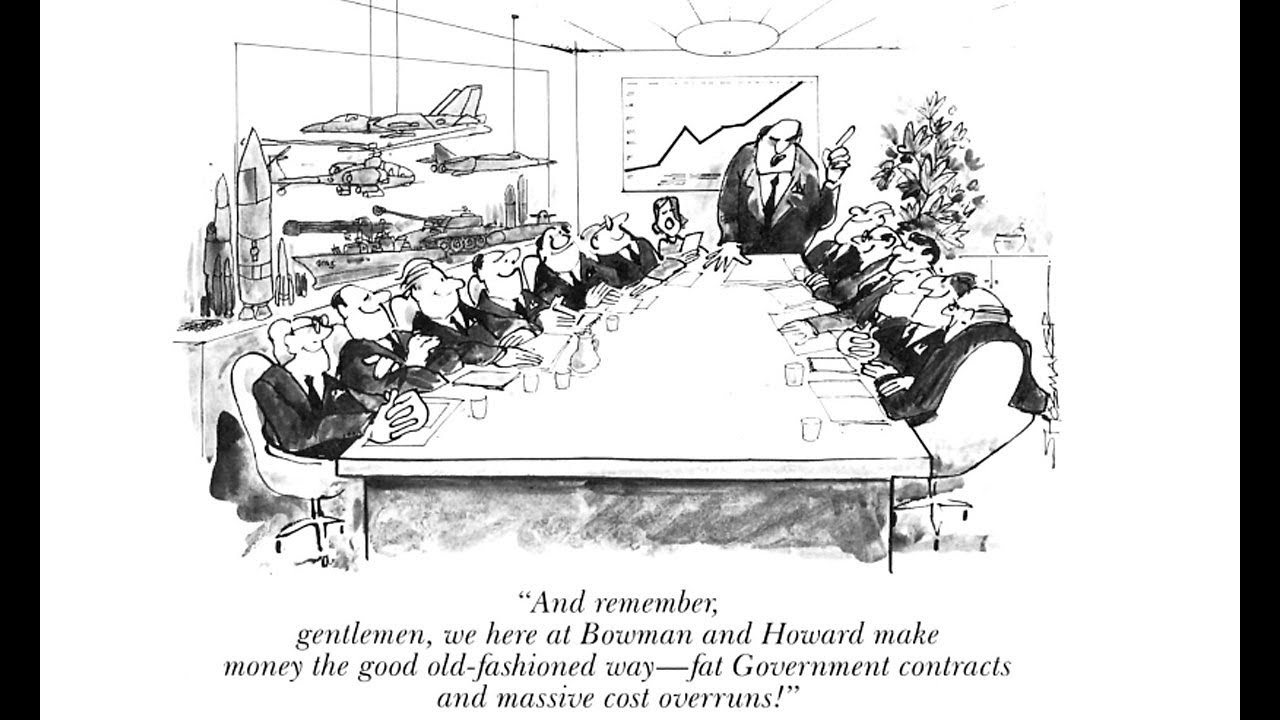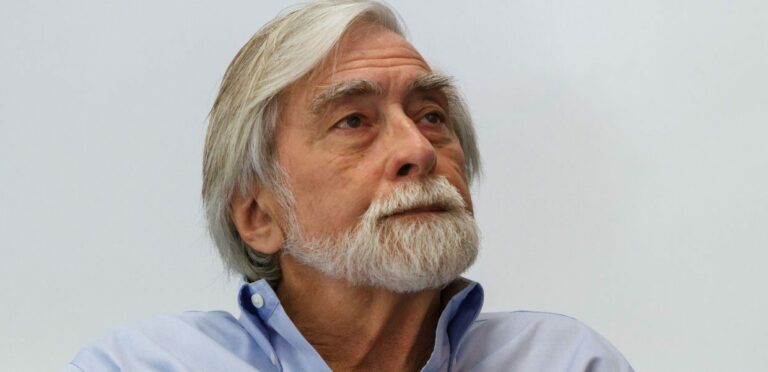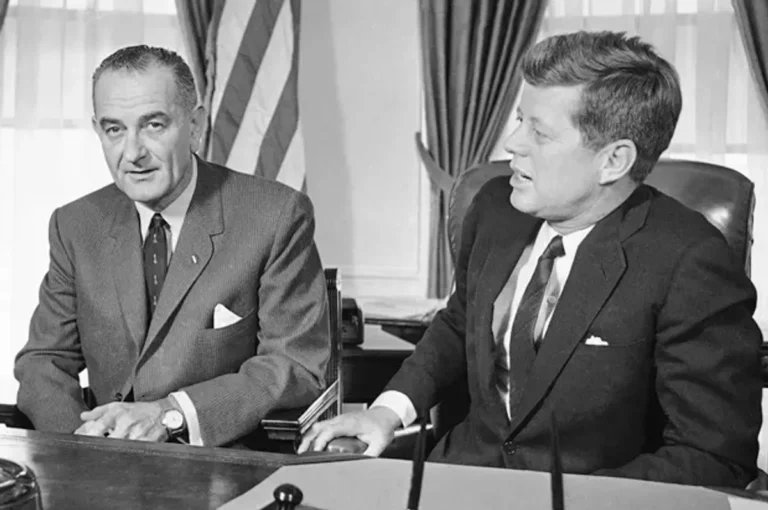DOD Criterion for Success Spend all Your Money by Year-End – Lester Earnest on RAI Pt 3/5
After working on the MIT SAGE radar system and at the Joint Chiefs, Earnest concluded “it’s basically a money-making system, that’s what it’s about and has nothing to do with real defense” – Lester Earnest on Reality Asserts Itself with Paul Jay. This is an episode of Reality Asserts Itself, produced December 28, 2018.
STORY TRANSCRIPT
PAUL JAY: Welcome back to Reality Asserts Itself. I’m Paul Jay on The Real News Network. And we are back with Lester Earnest, one of the creators of artificial intelligence, or machine language, as he would prefer to call it. Thanks again for joining us.
LESTER EARNEST: My pleasure.
PAUL JAY: So you work at MIT, and you’re part of a program which is a big fraud. You’re finding crazy stuff going on in the technology with Bomarc missiles. One thing after another, the irrationality of this and how much of this is driven by profit-making, not actually worried about a real, an existential danger from the Soviet Union, what’s this do to your own belief system?
LESTER EARNEST: Well, I was going downhill, getting more and more frustrated with my job. The people I was working with were good people. They had, most of them, come out of MIT. And bright. But our goals were strangely twisted. When we were working at MIT, the goal, technological goals were stated in advance, and we were assessed based on the degree to which we met those goals. Once we went into Mitre we started using the Defense Department’s criteria for success, the goal being to spend all the money in the budget by the end of the fiscal year. And if you did that you would likely get more, whether you accomplished anything or not. There was no assessment of success or failure other than spending the money.
PAUL JAY: And by this point that’s your, your understanding of it, at this point. That this is no longer about defending the nation. This is about making-
LESTER EARNEST: It wasn’t just my understanding. That’s the way it actually worked.
PAUL JAY: I believe that. But I’m asking you—that’s what you believed at that point, too.
LESTER EARNEST: Yeah. Yeah, I had to work toward those goals.
PAUL JAY: So everybody’s cynically involved in all this making money, while the rest of the population thinks they’re about to get blown up.
LESTER EARNEST: Yep. So that was a real reversal of common sense. And so all of these projects were designed to make money, not to accomplish anything. And in general, they did not accomplish anything.
PAUL JAY: All right. 1963-’64, you are questioning, I guess, everything you thought was true turns out to increasingly be a crock, and be about money; true meaning the mission of the United States, the, you know, the mission of the armed forces to defend the country, for democracy, turns out to be how do we make a lot of money. And the Vietnam War’s really starting to unfold. When do you start to really decide that what you believe in is not true?
LESTER EARNEST: Well, I knew that I was doing dirty work from way back. And I was being well paid for it. But I was getting increasingly bothered by the fact that I was costing taxpayers a lot of money for no good at all. And this whole thing wasn’t going anywhere. But I still struggled ahead a while longer. I worked in Los Angeles for several months doing a technological prediction which was supposed to help the planning. And I also criticized the way they had been building systems.
PAUL JAY: They being the armed forces.
LESTER EARNEST: Correct. But the head guy in our group, a colonel, said we can’t say they’re doing things wrong. So he took my report and censored it so that none of that got out.
I then came back to Boston and was recruited to go to Washington, DC to work for the Joint Chiefs of Staff, designing the so-called worldwide military command and control system—another giant mess. And dealing with the Joint Chiefs and their staff was no more pleasure than dealing with the rest of the folks. One of the first things I realized was that geography to the military commands is different from the rest of the world’s view. We draw boundaries of countries and counties, states, and things. The military has command boundaries, which are quite different. Many commands cover multiple countries. So it’s all a very different system.
So the first thing I wanted to do was learn about military geography. So I sent a guy over to the Pentagon to collect that information. And an hour later I received a call from a colonel, maybe it was a general, saying get that guy out of here and never send him back. I said, what’s the problem? He said he has a beard. We don’t allow anyone with a beard in our office. So that gave me another insight.
And we went on from there. I listened to the morning briefings of the Joint Chiefs. They had, it was in a two-story room, they had a balcony enclosed, and the presentation was down below with three display screens. And other lowlifes like me were kept down on the lower level. And I saw what a fraud that was. The good stuff came from commercial news sources. The intelligence stuff was phony to the core, a lot of it. Some of it was real. But there was a whole lot of phony stuff going through there.
PAUL JAY: Yeah, we learned from our interview with Daniel Ellsberg that in 1962-63, the Air Force was telling the President and the country of this enormous missile gap; that supposedly the Soviet Union had 40-60 ICBMs aimed at the United States. And of course, this required an enormous expenditure to not only close the gap but to significantly surpass the Soviet Union. It was discovered—Ellsberg found out—that they figured out by satellite photography, and by—I believe it’s ‘62 or ‘63—that, in fact, the Soviet Union had four ICBMs. The whole thing was a crock created by the Air Force. In fact, the Army and the Navy had a much more accurate assessment, far, far lower than 40. Khruschev, it turned out, was bluffing that he had parity. Nowhere near parity. But the Army and Navy had more or less figured out that. But the Air Force was telling everybody, in order to spend enormous amounts of money on a whole whack of ICBMs.
And the other important part of this thing is if they only have four ICBMs, then how real is this strategy for global domination? It turns out that whole thing’s mythology. Did you start to get a sense of that? That this is more about American hegemony than it is about defense?
LESTER EARNEST: Yeah. It’s, it’s basically a money-making system. That’s what it’s about. And has nothing to do with real defense.
PAUL JAY: In the next segment of our interview we’ll talk about how this big fraud helped create the conditions for the internet. Please join us for the continuation of Reality Asserts Itself with Lester Earnest on The Real News Network.
Podcast: Play in new window | Download






